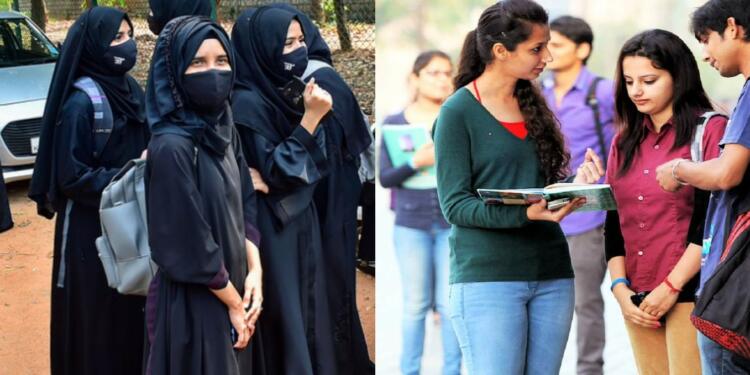The burqa and hijab are an imposition on Muslim women. No Muslim girl is born with the urge to wear a hijab or burqa and cover herself from head to toe. It is what she is fed by her family and community. Muslim girls are told to confine themselves within long black pieces of cloth. They are forced to hide themselves from the world. These days, the hijab and burqa are being called symbols of ‘empowerment’ and ‘liberty’ by Muslim society. Liberals, who have no functional cerebrum, are readily hopping on to the bandwagon.
However, what impact do such constrictive clothes have on a woman? How do they affect her psyche? Do they hinder with her growth? Could it be that the hijab and burqa are in fact, resulting in Muslim women not succeeding in society?
A French Study Sheds Light on the Consequences of Burqa and Hijab
A study conducted in France between girls born between 1971 and 74 to those born between 1987 and 90 has found the burqa and hijab are limiting the development of Muslim women. In 1994, France introduced a law that outlawed veils from school premises. Effectively, girls born between 1971-74 completed schooling with the veils on, while those born between 1987-90 were largely free from such practices.
The study found that women in the 1971-74 group were around 13 per cent less likely to graduate from high school than their non-Muslim peers. For the 1987-90 group of Muslim women – who would have attended school with some form of veil ban in place – the gap shrunk to just seven per cent.
Similarly, the ban on veils from school premises also had a positive effect on students who were forced to wear the veil and on students suffering from stigmatisation and discrimination in school because of it. According to the study’s co-author Professor Eric Maurin, it was demonstrated that there was a ‘significant increase in educational attainment’ amongst the group of Muslim women ‘who attended middle school and reached puberty’ after the 1994 ban on veils.
Most importantly, the study also found that the liberation of Muslim women from veils improved societal integration. Muslim women, after giving up on veils, witnessed greater integration with French society. Also, there was a very significant increase in the proportion of Muslim women who married a person from a non-Muslim group.
What’s your excuse, Indian Muslims?
The outlawing of hijabs and veils in schools of Karnataka has irked the Muslim community to a great extent. The ban on veils by an Indian state made international headlines. India, global media declared, was becoming an untenable country for Muslims to peacefully live in.
However, if the French study is to be taken into account, India is taking constructive steps toward bringing peace to the lives of Indian Muslims, particularly women. The removal of veils from the lives of Muslim women can lead to them performing better academically and socially.
Is that what Islamists want to prevent? Do they desire for Muslim women to be contained and not allowed to succeed? Do they perceive women from their own community as challengers to their hegemony? Why else would Islamist clerics decide on what a Muslim woman should wear and what she should desist from?
Read more: Muslim Women – The Community beyond the reach of Feminism
Muslim women are active participants in their own systemic oppression. They have made the donning of a hijab and burqa a matter of choice. What they forget is the fact that such veils have never been a choice for Muslim women. They have always been brutally imposed on them. Yet, a myopic worldview is leading to women from within the community not rising against such medieval practices. If they do, they will begin flourishing in all fields. The removal of veils from their lives may just make them a lot happier.





























